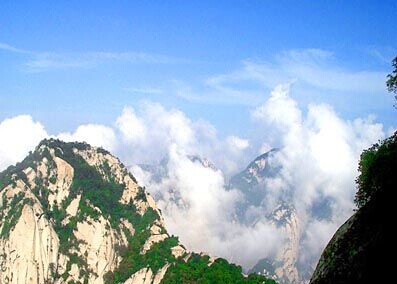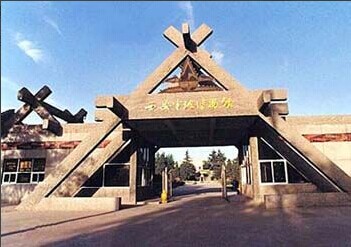9. Mt. Huashan

Situated in Huayin, 120 kilometers (about 75 miles) east from Xi'an City, Mt. Huashan is known as “The Number One Precipitous Mountain under Heaven.” It is one of the five sacred mountains in China. In ancient times, Huashan was called Mt. Taihuashan. From a distance the five peaks seem to form the shape of a “flower” (“hua” in Chinese), hence the name “Huashan.” It is famous for its natural vistas of steep and narrow paths, precipitous crags, and a high mountain range. It is home to several influential Taoist temples where emperors of past dynasties made pilgrimages, making Huashan the holy land of Taoism.
Admission:180 yuan (April 1 to Nov. 30); 100 yuan (Dec 1 to March 31, last entry 5:15 p.m.)
Travel Tips: 1. Time of sunrise in Mt. Huashan: Spring: 5 a.m. to 6 a.m.; Summer: 4:30 a.m. to 5:20 a.m.; Fall: 5 a.m. to 5:20 a.m.; Winter: 5:30 a.m. to 6 a.m.
2. The East Peak and Sunrise Peak are said to be the best two places for watching the sunrise.
10. Banpo Village Ruins

In the Yellow River valley, Banpo Village Ruins is a typical representation of the Neolithic Yangshao Agricultural Village. The ruins date back from 5600 to 6700 years ago. It is the earliest known agricultural village in China. The term "Yangshao culture" is used because the first example was found near Yangshao Village. The oldest Yangshao-type village is Banpo. The Banpo Village Ruins were discovered in 1953 with a built-up area of 50,000 sq. meters.
Admission: 65 yuan (peak seasons) ; 45 yuan (off seasons) Opening hours: 8 a.m. to 6 p.m. (peak seasons); 8 a.m. to 5:30 p.m. (off seasons)
